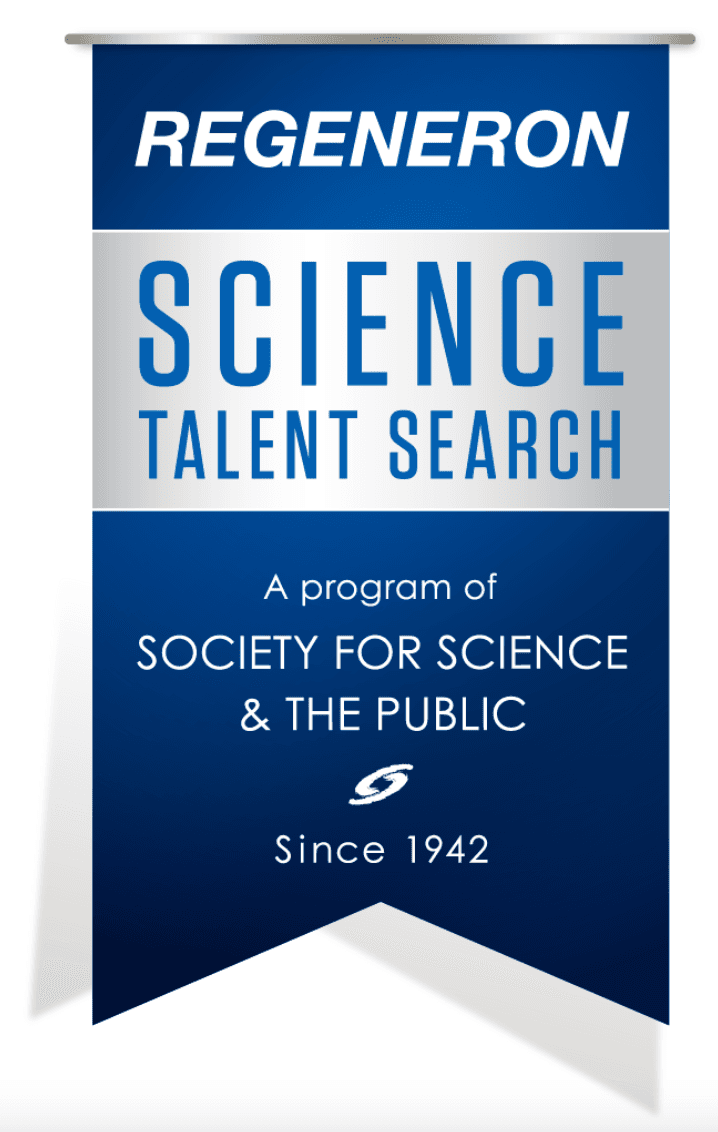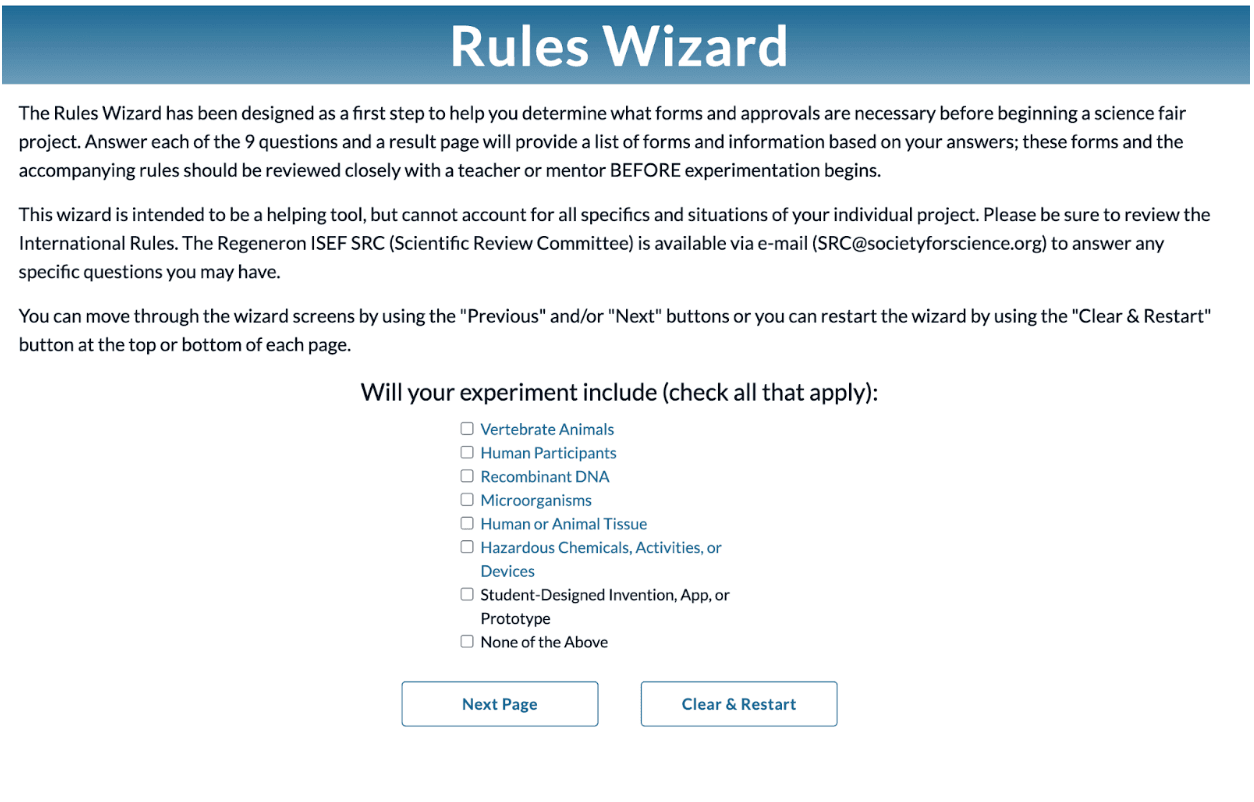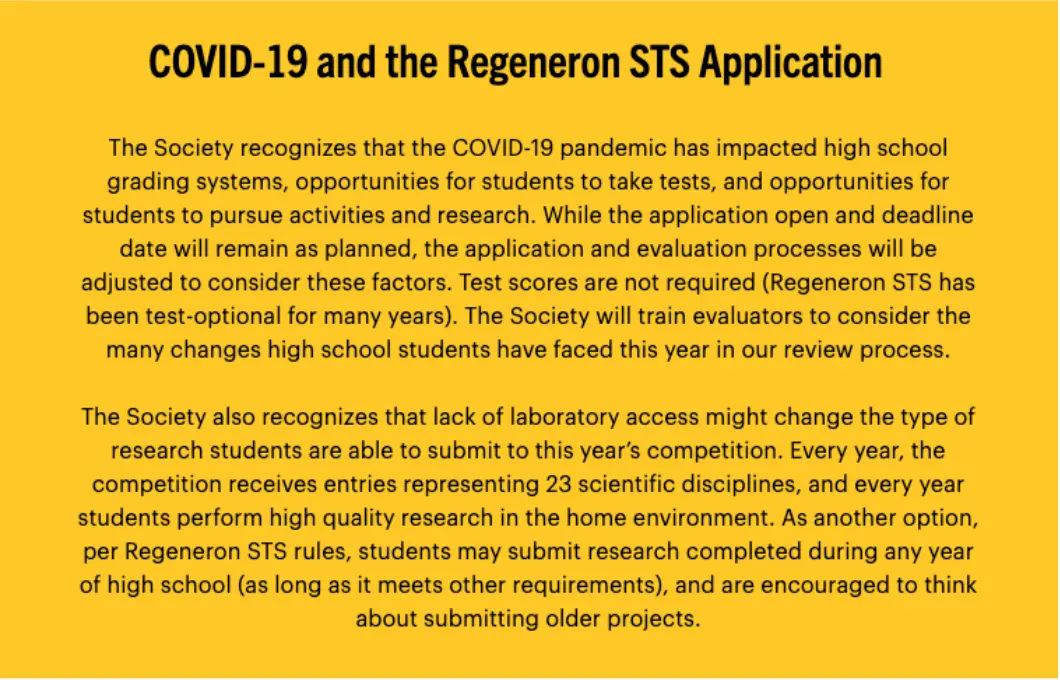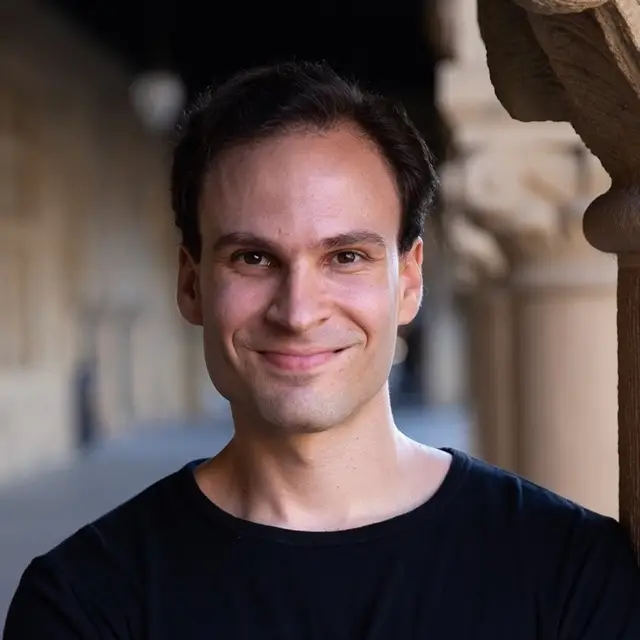Regeneron Science Talent Search (STS): The Complete Guide
6 minute read
What’s the Regeneron STS?
The ultimate honor for a high school scientist in the U.S. is winning the Regeneron Science Talent Search (STS). It offers the highest cash award of any science competition for a high school student (the top prize is $250,000) plus big prizes for 2nd place ($175,000) and 3rd place ($150,000). In addition, the distinction of STS Scholar and $2000 per individual is granted to another 300 entrants, three of whom have been Polygence students! Read more about one of these students and her project below. Forty STS finalists are awarded at least $25,000 each and invited to attend the STS Finals Week in Washington, DC. About 1800 high school seniors apply each year.
Apart from the many financial reward possibilities, STS offers the life-changing opportunity to meet a community of like-minded peers, attend field trips, and learn from leading scientists and innovators in Washington, DC. STS awards also provide instant recognition by top colleges, universities, employers, and other important figures in the scientific community. Past STS winners have won 13 Nobel Prize Awards, 2 Fields Medal Awards, 22 MacArthur Fellowships, and more.
Founded in 1952, STS is a unique competition in that its mission is to find future leaders in science and not just showcase impressive science projects. (That said, many Regeneron ISEF participants also submit their science research projects to Regeneron STS. You can apply to both with the same project if it fulfills STS requirements. If you’re curious to learn more about the Regeneron ISEF competition, see our complete guide for high school students here .)

What Are the Requirements for Regeneron STS?
First of all, you must be eligible. To qualify as a contestant, you must be a U.S. citizen or U.S. resident in your senior year of high school. You must submit a research paper (max 20 pages) about an original research project you completed in a STEM subject. (The project must have been done individually; no team projects are allowed.) You must also submit three recommendations from teachers and a guidance counselor, transcripts, test scores, and answers to essay questions. Everything must be submitted by November 9th of any given calendar year. Avoid the common reasons students fail to qualify. You can also explore the STS Rules Wizard in the online application to avoid disqualification.

How Can You Win Regeneron STS?
Regeneron STS does not share the exact rubric for how entries are judged, but a few important things they are looking for are:
Exceptional scientific research skills
Exceptional grades
Extracurricular pursuits
Innovative thinking
Community leadership
Depth and breadth of knowledge in your independent science research topic
Here are some tips for how to win based on a great Regeneron STS webinar on the subject.
Tip 1. Distinguish your contribution from your mentor’s
Many award recipients have worked closely with mentors who encouraged them, taught them skills, and connected them to critical resources. The STS application even requires you to submit a recommendation from someone you consider a mentor (this person can also be a family member. However, it’s important to demonstrate that you had a high level of independence in your research. If your research is part of a larger study, be sure to specify which part is your contribution. Also, make sure that your mentor recommendation is written by someone who has gotten to know you well and can speak to your strengths. This person doesn’t need to be a famous professional scientist or have a Ph.D. It can be the lab technician or a grad student who helped you the most. You should also share your research paper and essay answers with your mentor. They can provide invaluable feedback. Don’t already have a mentor? You can filter our mentor profiles based on your areas of interest. All our mentors have exceptional academic backgrounds and teaching experience.
Tip 2. Talk about your daily activities
The application accepts up to seven extra-curricular activities. Talk about how you truly spend your time beyond your scientific research. Activities can include family or religious obligations. Activities for past winners have run the gamut from STEM clubs to volunteer work to theater and athletics and much more.
Tip 3. Talk about what makes you a future leader.
The judges want to get to know you. When you’re writing your essays, be sure to include what drives you. What challenges have you faced? What have you overcome? Give examples of what makes you a future leader. These answers help put your research in a wider context.
Tip 4. Make sure you are clear about the process of doing your research.
What drove you to do this particular research? Whether it was in engineering or computer science, make sure you explain where and how you did it; what it took for you to be able to do it; and any difficulties you encountered and overcame. Also, be sure to explore questions such as: Why did you design your project the way you did? What did you learn from it? The context behind your research is arguably more important than the results. Even if your experiment failed, you could still win. Judges are not looking for perfection. If you can explain the process and what you learned as a result, and how you may approach the experiment next time, judges will be interested.
Tip 5. Write about your project with depth and breadth in your research report.
Your project will be read by professional scientists in and out of your field of study. You need to balance your writing so that experts and non-experts can appreciate the importance of your project and understand your contribution to it.
Tip 6. Get recommendations early!
To get your recommendations in on time and to ensure that they are the highest quality endorsements of you, you should also reach out to your teacher, mentor, and guidance counselor to ask for help as early as possible, and no later than mid-October. Recommenders can’t write letters and give them to you. They must submit their essays in the application text boxes. The judging panel prefers that the first recommendation come from a science teacher.
Tip 7. Don’t stress out about grades or test scores
You don’t need perfect grades or test scores. Submitting test scores is optional. You don’t need to stress about where you did your research. Working in or out of the lab is just fine. As far as time spent, it’s acceptable to have spent just months to a few years on the project. More critical than duration is your independent contribution to the research, your process, and what you did with your hypothesis. You also don’t need a famous scientist mentor or to submit some groundbreaking experiment that changes the history of science to be successful. You don’t even need to prove your hypothesis. If you can explain why your project failed, that’s always a bonus. Also, you don’t need to worry that a specific project category is more popular than any other. Judges show no bias toward one topic. Just choose a subject that you’re interested in.

What Are Some Examples of Winning Projects?
Projects addressing significant real-world problems are the ones that stand out. Here are some topics of recent STS winners:
Mental health: Polygence student Isabel Wang studied the relationship between locus of control (LOC) and coping strategies during the COVID-19 pandemic. As her focus group, she chose predominantly Asian high school students in the New York suburbs and used Rotter’s LOC scale and the Brief COPE Inventory to determine trends in their coping mechanisms. She found that an internal LOC correlates to an increase in problem-focused coping strategies, and an external LOC to emotion-focused and avoidant coping. She also observed gender discrepancies between LOC and problem versus emotion-focused coping. Her findings suggest that both gender and LOC play a role in determining coping mechanisms during uncontrollable situations, and she further identified these nuances. Her research can serve as a helpful tool in psychological interventions during a pandemic or other such natural disasters.
Astrophysics: Christine Ye studied the gravitational waves released when neutron stars and black holes collide. She combined this data with statistical model techniques to calculate the neutron star’s mass and the width of the lower mass gap. She also observed that spinning neutron stars could become extra massive.
Engineering: Victor Cai designed a short-range, distance-sensing radar that was incredibly precise (12 cm accuracy), efficient (it only uses a few kHz compared to normal radar’s 1GHz), and cost-effective. He built it by combining two low-power software-defined radio (SDR) units with a radar algorithm called multiple frequency continuous wave (MFCW). Possible applications could be used by firefighters trying to find people in burning buildings, medical imaging, and self-driving cars.
Computational biology: Amber Kaixin Luo combined statistics and an algorithm to reveal vital information about ribosome pause sites. These pause sites, where ribosomes “pause” as they are translating messenger RNA to make particular proteins, are not easily identified with current technology. Her new approach, called RiboBayes, makes it possible to investigate how changes in ribosome movement can impact various diseases, including cancer and Alzheimer’s disease.
What is the Timeline for Regeneron STS?
June 1-November 9: Science Talent Search entries are accepted.
Early January: Top 300 scholar recipients are announced.
Mid-January: Top 40 finalist recipients are announced.
March 8-15: Regeneron STS Finals week in Washington, DC
March 14: Winners announced at a ceremony in Washington, DC
Are you ready to dive into your own STEM research project to submit to next year’s Regeneron STS? What are you waiting for? Sign up to embark on your research journey with Polygence now!
Want to Learn More?
Join Polygence and do your own research project tailored towards your passions and guided by one of our expert mentors!
